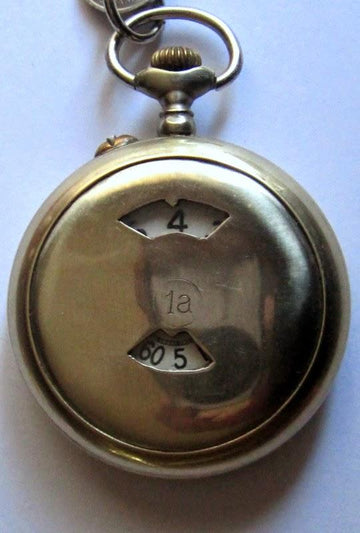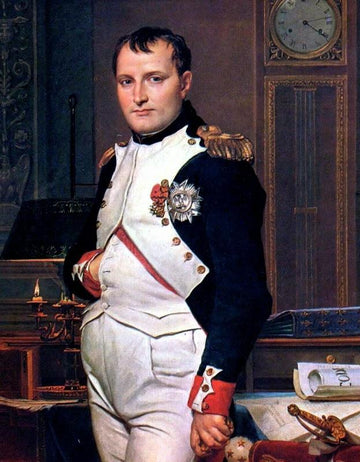
Trends and fashions continue changing. What is in vogue today was once outdated, and what’s currently old fashioned will be trendy.
But watches have always been a great fascination for every class, age, and gender. They never went out of fashion. Although their materials, styles, and models changed, the love for watches never faded away.

Collectible pocket watches are not only a tribute to fashion, but also an excellent accessory that will serve the owner faithfully for many years. However, pocket-size instruments are now considered more of an art object than a means of timing. In our pocket watch pictures collection you will come to know what are they and how to wear them!

In the modern world, it is almost impossible to find a person with a pocket watch dressed in casual clothes. Despite this, pocket watches still hold a certain place in the hearts of most collectors.
History Of Pocket Watches
Let’s dive into the history of these pocket watches.
17th Century
The first pocket watch appeared in the 17th century, with the invention of a suitable size mechanism. Instead of Glass, they were closed with a brass lid, which protected the arrows, which could be rearranged with your fingers. Glass has been used since about 1609. In 1675 in England, King Charles II introduced garments such as vests with pockets that were ideal for most pocket watches of the period. Until then, watches were not carried in their pockets.

18th Century
With the advent of pocket watches, until the middle of the 18th century, they were not considered a luxury item. The American watch companies produced excellent pocket-size watches in large quantities. Only a hand-made Swiss pocket watch was expensive. In general, pocket watches were supposed to provide people with lower incomes.
Most of these inexpensive watches were intended for sailors, therefore, the case was decorated with scenes of naval themes and ships.

In 1860, the American watch company Waltham introduced pocket models under the mark “57”. For them, replaceable parts were assumed, which reduced the cost of manufacturing pocket devices. Technical innovations at Waltham’s production have made it possible to makeover 50,000 copies per year, surpassing other similar product manufacturers.

At the same time, the quality remained excellent: the instruments showed the time with precision while remaining practical and excellent in appearance. These figures have made Waltham a flagship manufacturer of affordable, high-quality watches. Of course, their design was inferior to Swiss counterparts such as Breguet, but in terms of accuracy, they were unmatched.

First World War
Pocket watches did not lose their popularity until the First World War. After that, the soldiers used trench models more convenient in war. In the Russian Empire, the most famous watchmaker was Pavel (Paul) Karlovich Bure and his son, who later moved production to Switzerland. After Bure’s death, watchmaking passed to his Swiss associates since Paul did not acquire heirs.

The greatest demand among collectors for the following old pocket models from the company “Pavel Bure”:
- “Supplier of the Yard”, a model of 1910;
- rare model of 1912 with an unusual dial;
- a model with a case of cupronickel, release 1917.
21st Century
Pocket watches were also a fashionable device during the USSR period. The Lightning model is still considered a valuable and expensive rarity found in private collections or in museums. Let us explain what caused the demand for the ancient "Lightning" in the XXI century on the territory of all the former USSR countries and abroad.

In 1929, Stalin ordered the purchase of Dubert Hampton and the construction of a watch factory in the Urals, which was named Molniya. The enterprise worked in Zlatoust for the benefit of the army and aviation. During the Great Patriotic War, the plant settled in Chelyabinsk, where it continues to work to this day. In the USSR, only party leaders, military personnel, or scientists could afford to buy such watches. Ordinary Soviet citizens could not afford it. In Soviet times, the Molniya watch was awarded to heroes, while the design of the premium watch device corresponded to each feat.
The company managed to survive in the 80s the competition of quartz movements and the collapse of the country. More than three dozen countries bought the products of OJSC Molniya, and an individual design was created for each of them.

The fashion industry has made watches a modern fashion accessory. Your watch choice can make you stand out as this accessory is a symbol of prestige, elegance, style, and status.
As for pocket watches, they were iconic. They gained so much fame in the past then disappeared from view, and, today, once again, pocket watches come with diverse designs and styles and are loved. They are the best combo of old and modern trends.
Conclusion
- A pocket watch used to tell about a nobleman, concerning his social status in the society. Pocket watches were handed down as a family heirloom, considering them to be a treasure regardless of their material. To accommodate the pocket watch, special pockets in shirts or vests were made.
- When pocket watches were introduced in the 16th century, they were blocky and awkward, and people wore them as necklaces. A century later, people started carrying them in their pockets. Its image changed into more rounded and slimmer cases in the 17th century. They were the first timepieces that the people could possess and looked upon as a status symbol.
- In the 18th century, these pocket watches were further decorated with diamonds, which increased their worth to an unimaginable extent. They gained the height of popularity in the 19th century. Before the 20th century, these luxury items were the most popular form of timekeeping. Nevertheless, the trend of wearing a wristwatch surfaced during the war when it had become a necessity. Pocket watches were widely used in railroading even when the popularity of pocket watches had reduced elsewhere.
Visit our store for more latest and antique pocket watch designs!




